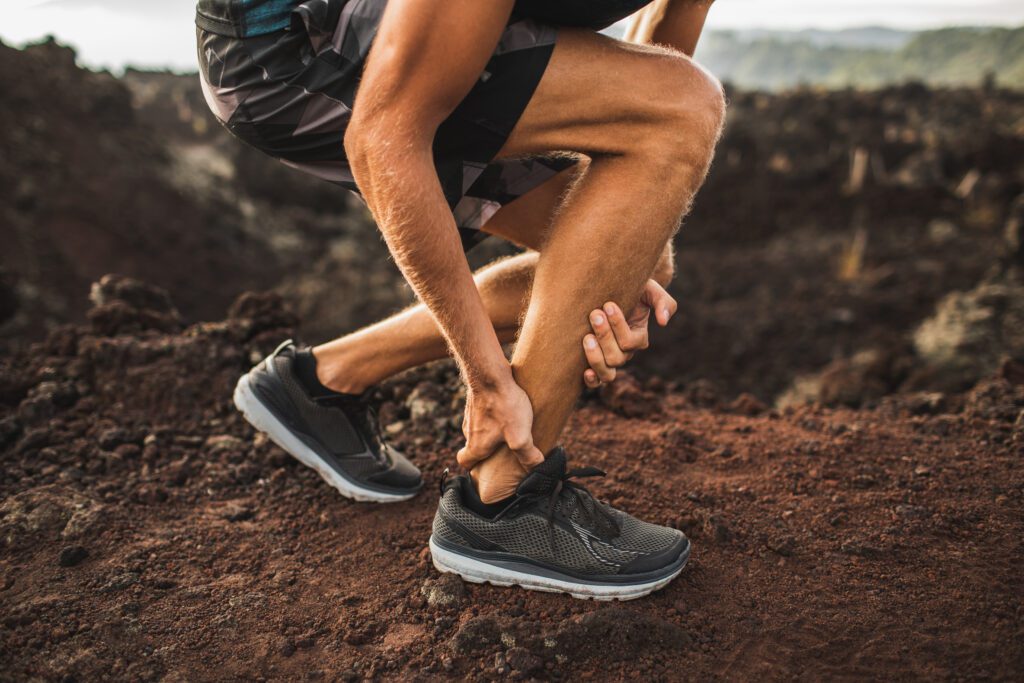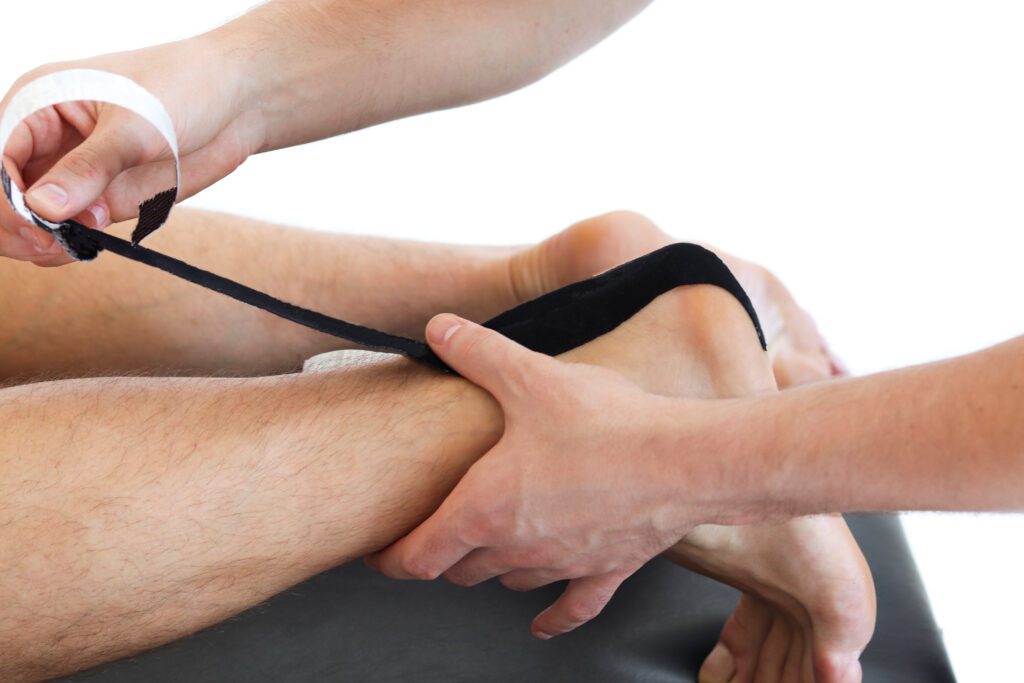What is it?
Achilles tendinopathy is a condition characterised by pain, swelling and stiffness in the Achilles tendon, which connects the calf muscles to the heel bone. It results from overuse or degeneration, rather than inflammation.

Who is at risk?
Athletes (especially runners), middle-aged adults, people with flat feet or high arches, and those who rapidly increase activity levels are most at risk.
What are some common symptoms?
- Pain and stiffness in the Achilles tendon (especially in the morning or after activity)
- Swelling or thickening of the tendon
- Tenderness when touching or squeezing the tendon
- Decreased strength or function
Causes?
Common causes include:
- Overuse from running or jumping
- Sudden increase in activity intensity
- Poor footwear or biomechanics
- Calf muscle tightness or weakness
- Aging or degenerative changes
How is it diagnosed?
Diagnosis is usually clinical, based on subjective history and a physical examination. In some cases, imaging (ultrasound or MRI) is used to confirm tendon changes or rule out more serious conditions such as a tendon rupture.
Do I need surgery?
Whether or not you need surgery depends on a few factors, including but not limited to:
- Duration of symptoms
- Severity of pain and effect on function
- Improvement over time
- Signs of a more serious pathology (e.g. tendon rupture)
- Other modalities of treatment (e.g. shockwave therapy, PRP injections, orthotics) have not helped
What does treatment look like?
Initial treatment includes:
- Rest or activity modification
- Ice and pain relief (e.g. NSAIDs)
- Graded exposure to higher loads (especially eccentric exercises)
- Education surrounding modifiable vs non-modifiable risk factors
- Orthotics or heel lifts
- Shockwave therapy (in some cases)
- PRP injections (in chronic cases)

How long will recovery take?
Recovery varies. Mild cases may improve in weeks, while chronic tendinopathy can take 3–6 months or more to fully resolve.
Can it come back?
Yes, especially if underlying risk factors aren’t addressed. Prevention strategies and gradual return to activity are key.
How can I prevent this?
- Gradually increase activity intensity
- Warm up properly
- Strengthen and stretch calf muscles
- Use proper footwear
- Cross-train to avoid overuse